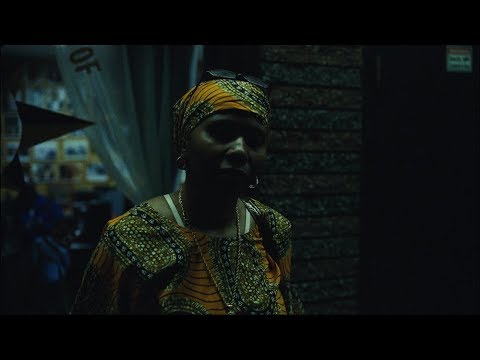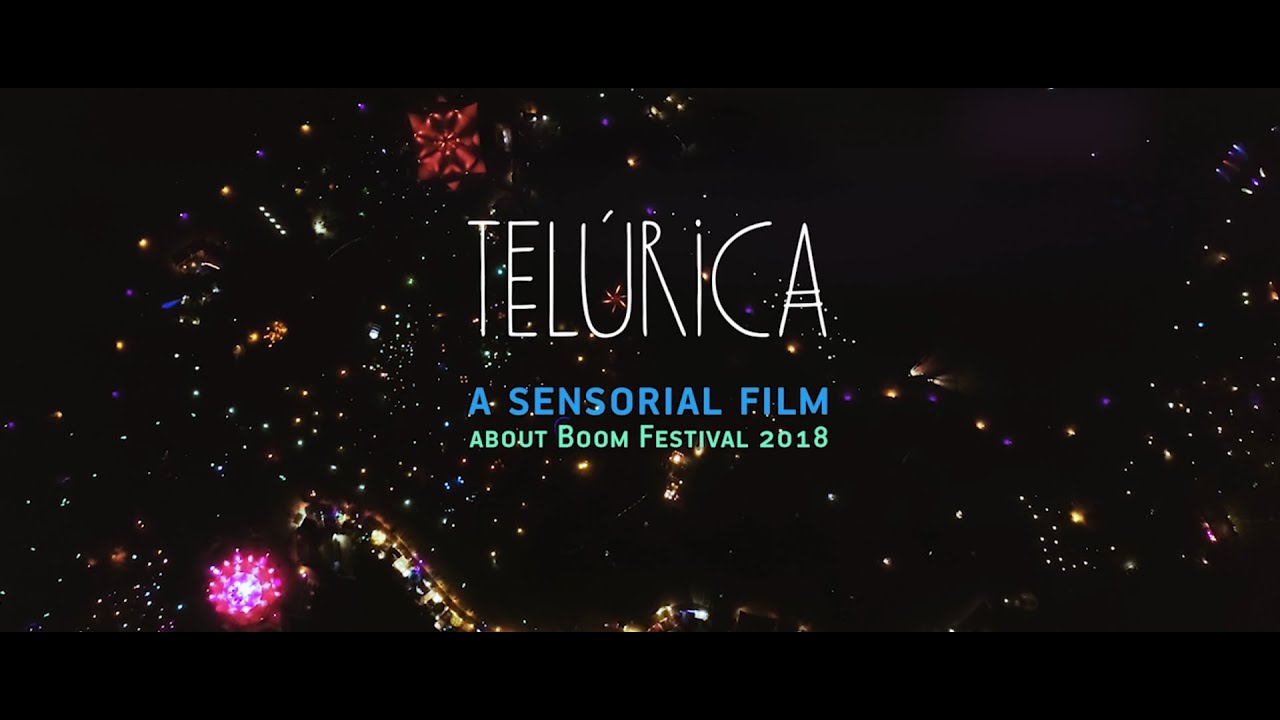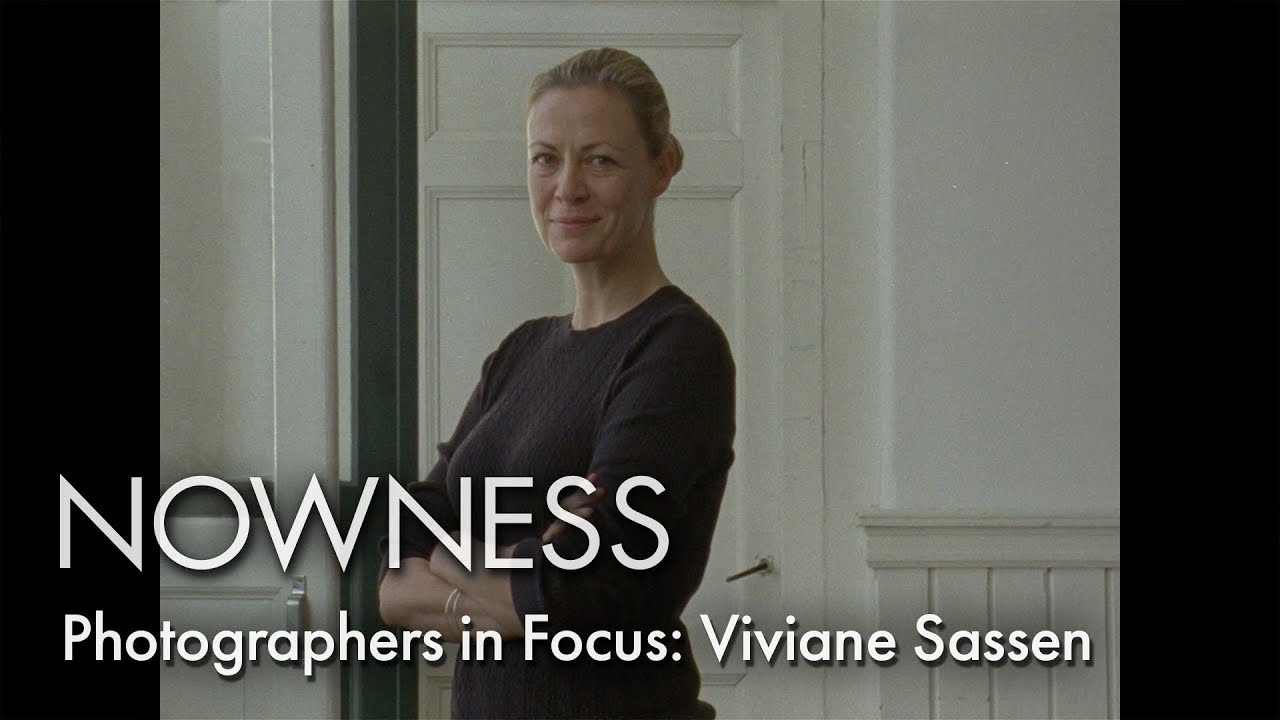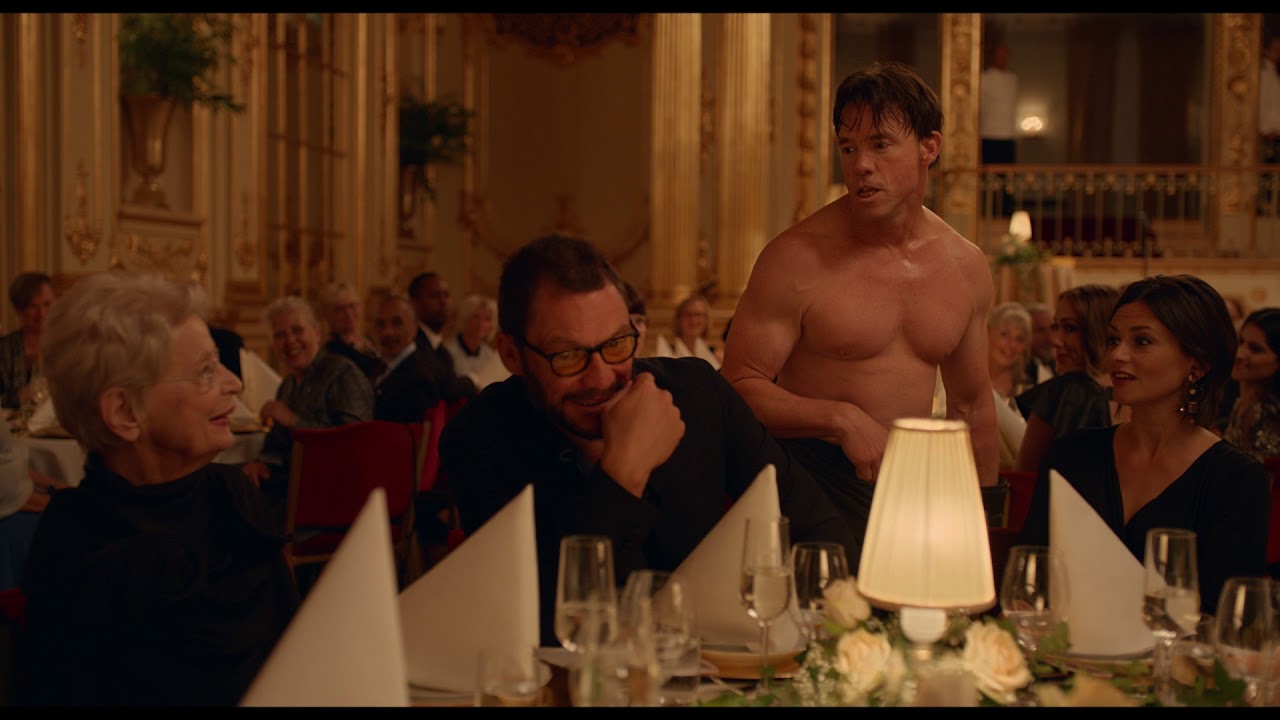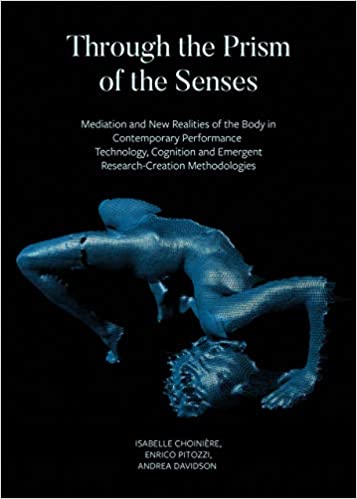Thinker. Traveler. Creator.
Ann René Giusti
Exploring human expression,
instead of human perfection.
[ I. THE FILM ]
EMBRACING CINEMATIC LANGUAGE
To begin, I've kindly asked my references, and additional professors Sr. Ivan Pintor (narrative theory) of Pompeu Fabra University in Spain, M. Joseph Moure and M. Frank Pecquet (art creation theory) from the University of Sorbonne in France, international UK cinema scholar and founder of Open Access Film Studies Dr. Catherine Grant, former head of BBC and chair of Media Arts at Royal Holloway University Dr. Jonathan Powell, author/professor of psychology Dr. Judy Sundayo, and Mr. Fritz Friedman, former global marketing VP to Sony and current commissioner of Arts & Culture in San Diego, to provide relevant professional and academic input regarding cinematic interpretation/effect via intermittent consultation (cited appropriately within final dissertation) during the first two years of this studies' visual and literary observation processes.
Regarding the option of a creative project to accompany my critical research, I'm interested in completing several montage collections to archive this study stylistically and historically - specifically showcasing female directors, along with male film directors who capture of the female subject in non-traditional ways. The collection of images and scenes are not to be arranged in a way where I use special effects, but juxtapose different images and scenes as a curated collection to reflect the broad findings during the analytical process of doctoral study. This collection would serve to present a kaleidoscope of ways that same gender or "same agent" filmmakers communicate and also showcase how dynamically that same female subject has been filmed by "others"; opposing or "opposite-agents". This is just the foundation to create a framework where other same-agent/opposite agent group comparisons can be explored in the future -- such as specific gender, ethnicity, nationality, migrated, socio-economic and other groups of shared identification.
Below I've put together a sample reel as an example of the type of collection I'd like to create over the period of research. Each film is significant for its style and story narrative involving the female subject. Although this reel reflects films I am aware of, the final project will mirror the broader selection of films explored for this study. In reference to the visual exploration, I first encountered haptic, performance and sensorial cinema through music and commercial directors such as Dave Meyers, Andrew Huang and Khalil Joseph. I was also familiar with similar styled photo collection books from Anna Atkins and contemporary photographer Vivane Sassen. Regarding literary insight that will inform the narrative structures of these films, I've included non-linear films, adapted novels, stage plays, and semi-scripted content by female creators, in order to reflect the range of participation of the female "as creator" in our observations of "same-agent" perspectives. The reason for this project came about because I've admired female multi-media artists who capture themselves (the female as her own subject), however I've not easily located moving-image styles of montages without special effects, nor within and extensive collection of cinematic styles and stories.
For example, female installation artists such as Tracy Emin, Vanessa Beecroft and Cindy Sherman, create visually striking installations in large and small spaces by using their own image (or extensions of leave "a presence" of their own image). They are essentially creators of "their own gaze". Thus, to arrange a stream of unmanipulated visual segments, apart from how they were created for performance, has the potential to stand as a body of work on its own. Moreover, in an age inundated with visual content, a collection of this type can be done with many other specified groupings to achieve meaningful results as well. The aim of this complimentary creative project is to represent more than just an "image stream of consciousness," but something encompassing an archive of collective memory, feminine experience, and of course demonstrates the variety of the "females' own gaze" and how "she" exists within a research-based "selection of gazers" (in segments where the director is not female).
With access to visual material, now mostly digitised and covering nearly a century of film craft, this artistic project serves also serves as a landmark where 1920 and 2020 can meet. The film Fantasia by Disney comes to mind; a dreamy compilation of animated work set to a symphony of music for a family audience. What also comes to mind are the jarring series of images and video streams of cinematographer Arthur Jafa's in Love is the Message. However, my project isn't intended to be an exact comparison nor guided by the elements of Fantasia or Love is the Message. The final projects' style will be determined by the research and new perspectives learned. The sample reel below is just an idea of what a collection may look like over three or four years of concerted academic guidance. Additionally, its resulting complication adds to existing networks of researched film record, such as the recently launched Directed by Women initiative www.directedbywomen.com and Professor Laura U. Marks' Substantial Motion Project www.substantialmotionproject.org -- and hopefully, more. Current conferences from Fall 2021 to Summer 2022 addressing intersectionality between Narrative Literature, Cinema and New Media Communication can be downloaded just beneath the viewing screen below.
If the goal of same-agent narrative and performance based communication can be fully explored, my hope is that this creative supplement to my formal research can bring viewers into an historical stream of "immersive thought" in a safe and inviting space (or, "world"). Yet, unlike a structured film and more like an installation, the final presentation should have no forced momentum, plot or premise to drive it. If the supplemental aspect of my research goal is met, the archive can serve as "historic installation" easily shared across online media. And the visual experience may feel haptic, performative, sensorial, surreal, realistic, historic, neo-expressionist, or none of those. Theoretically, what should remain present is the "element of the feminine" in "her own words"; albeit visually. Apart from a fantasy of dancing brooms with Mickey Mouse in a wizard's hat (Fantasia), or a stream of photography and visual clips exploring histories of love and violence (Love is the Message), my own complimentary project, alternatively, aims to represent subtle observations within a chosen collection of films that address feminist narratives and symbolism expanding across journals, conferences and growing online academic spaces -- an appropriate compliment to a broad study of performance literature and its visual craft from 1920 to 2020.
Please feel free to grab a coffee. Or, some wine. Or, leave it on in the background.
This may take a minute -- and shouldn't hurt at all.
[ II. THE VISUAL ]
CAPTURING THE HER/OINE: A Comparative Study of the Female as Director and Subject to Define Same-Agent Communication
Since the female is the subject of study, the analysis of their films naturally include a fair balance of female and male feminist contemporaries such as Teresea de Lauretis, and her perspectives on works of Chantal Akerman, Agnès Varda and Sally Potter, to name a few. Additionally, Ann Kaplan, Laura U. Marks, Jane Gaines, Ann Doane, Trinh T. Minh-ha, Catherine Grant and Bell Hooks are also incorporated as foundational cues by which to base concluding interpretations.
The significant element of this study is to compare separate structures, with identifiable patterns and methods, first. This lays the groundwork for adapting the model for other "same-agent" groupings to be analysed in the future. Although a slightly closed study to establish a "base-structure" where the female is considered the "same-agent" and the male director as the "opposite agent" (or 'opposing' agent) isn't common, it is not opposed to Deleuzian theory where "differences" are seen as the evolutionary process (ie, process theory) where one develops "identity" encompassed by one's own self-awareness in nature and society. Hence, by establishing two distinct groups and observing their own methods of cinematic communication is to recognise patterns of similarities and differences that exist as "cinematic language".
Further, these discoveries may uncover ways in which "same-agent" groups (where the directing body is the same as the subject) have chosen to film one another and use entirely different methods, patterns and narrative scope. Deleuze's most notable observation in Différence et Répétition (1968) discusses the concept of "identity" being understood through difference itself, so therefore by exploring things of the same genus, we can understand detailed differences in a more comprehensive manner. Hence, by observing visual and narrative comparative similarities and differences within two similar groups, separately, a framework of a truer comparison can take place; leaving observed repetitive practices to speak for themselves -- as a visual language communicating to us, the viewer.
Finally, while initial questions pertaining to cinematic language are premised by classic structural film theorist Gilles Deleuze's books, Cinema 1: The Movement Image/Cinéma 1. L'image-mouvement (1983) and Cinema 2: The Time Image/Cinéma 2. L'image-temps (1985), the significance of current recurring visual trending styles are analysed in parallel with feminist film theory and their female directors or cinematographers. Naturally, addressing same-agent/same-subject methods within one select group -- the women -- shall raise a few particular theoretical questions. For instance, how has feminist theory evolved alongside other social groups or sub-sets in nations that maintain profound standing in cinematic history and cultural archive? And moreover, what does the female as same-agent/same-subject reveal to the "feminist perspective" conversation symbolically and cinematically?
Topical questions I have are if new directors are choosing writers more often with story narratives relating to social issues, rather than literarily classic dramas? Or, in other words, do storylines contain details the viewer is “expected” to understand in reality/real-time, similar to select heroine-lead stories during feminist and social movements of the 60s and 70s? I would also pose questions about experimental/studio film styles to evaluate replications of early experimental film techniques used such as Maya Deren, or early documentary styles of Zora Neale Hurston. These, and other inquiries, are anticipated as they relate to eras when women were novice filmmakers. As result, mirroring patterns of style may occur within a new generation and new set of novice female content/filmmakers, created by the advent of social media and current push for a gender balanced industry.
French film theorist Christian Metz was known for an almost antagonistic approach toward the applicability of cinema as a language. He embraced metaphysics, structuralism, and psychoanalysis, transforming canons of future film interpretation. Although Metz disagreed with other theorists who sought to understand "the language of cinema", he never deviated from his aim to categorise what was seen and unseen. To make the argument delineating cinematic communication, this research uses same-agent methods to discern minutia in visual and narrative methods used by "same-agent/same-subject" groups, and between those, and existing journals and books on haptic, sensorial and performative cinema, further define the seemingly abstract signifiers of trending visual styles. For, realism, surrealism, expressionism, naturalism, and neo-realism, were also at one time "undefined" and "abstract" until enough were made and analysed to solidify their place as cinematic archive.
PLEASE CLICK "JOURNALS AND PROPOSALS" FROM SIDE MENU TO DOWNLOAD RESEARCH DETAILS.
![[ II. THE VISUAL ] image](https://images.cdn-files-a.com/uploads/5786631/400_61b075f4c4a19.jpg)
![[ II. THE VISUAL ] image](https://images.cdn-files-a.com/uploads/5786631/400_61b0720c5b718.jpg)
![[ II. THE VISUAL ] image](https://images.cdn-files-a.com/uploads/5786631/400_61b4ad41eccbe_filter_61b4adacd5de3.jpg)
[ III. THE LITERARY ]
CAPTURING THE HER/OINE: A Comparative Study of the Female as Director, Writer & Subject to Define Same-Agent Narratives
Questions guiding analysis of selected cinematic literature shall be shaped via different schools of literary and dramaturgical theory, in order to provide a fair range of insight into reasons why same-agent grouping present their narratives for cinema similarly or differently. Founding literary criticism methods intended to be used for this study are: practical (or direct) criticism, where the text is examined without regard to any particular outside context. Contextual criticism, where the author, dates, place of writing, known audience responses, adaptations, or any other outside information, may inform our observations. Cultural literary theory may be used when examining the text within its socio-cultural environment. Psychoanalytic criticism will explore neuroses and psychological states of characters in the text, and also inform interpretations of a characters' symbolism. Other noted psychoanalytic critics whose' theories have also been applied to cinema and dramaturgy include, Jacques Lacan and feminist Julia Kristeva.
Modernist literary criticism can be utilised to reflect narratives dealing with experience of twentieth-century life. And post-structuralist literary theory will be considered when narratives break formal and structural cohesion; the resulting action for this interpretation would be to take a deeper look at where narrative is reliant upon social structures/experiences that may have influenced the author and/or director. Specifically in reference to post-structural theorist Roland Barthes who laid the groundwork for semiotics – the study of signs and symbols in art. Deconstruction theory will be used according to methods proposed by Jacques Derrida, where analysis is focused on the text's apparent ideas or arguments. This approach may also inform the study on how to resolve contradictions that render any singular reading of a text impossible.
Additional approaches to make final conclusions of text, story structure, and meaning, may include postcolonial theory where Western thought (or impact of colonialism) may be critical -- similar to Edward Said's book, Orientalism (1978). Feminist criticism and gender theory will be assessed in the vein of Virginia Woolf’s essay A Room of One's Own (1929), and feminist critics Elaine Showalter and Hélène Cixous. Queer theory, particularly through the lens of sexual orientation and gender identity which is rapidly evolving, will also include perspectives according to playwrights, novelists, and screenwriters who have been interviewed about their process. Critical race theory, primarily concerning law, criminal justice, and cultural texts through the lens of race, will be informed by leading critics such as Kimberlé Crenshaw and Derrick Bell.
Finally, disability theory and humanistic theory (both growing in a number of intersectional fields of critical study) are discussed in stories where ableist views are presented within the story, or seek to examine ableist societal structures, such as CODA (2021), Babel (2006), and Country of the Deaf (1998). Where these theories are discussed within the framework of narrative literature as screenplay/stage play, this study aims to highlight trend-types in critical theory itself. For, as stated above, narrative structures existing between same-agents and opposing agents serve to shed light on micro-narratives that may be overlooked if analysis were too general. Moreover, the script as dramaturgical literature also allows for an evaluation of a broad range of texts over a short period of time since the screenplay/stage play typically adheres to a concise number of pages -- being shorter than a novel, yet longer than poetic verse.
To explore scripted narrative literature alongside its performative (cinematic) counterpart, permits modern literary critics to “re-examine” and “re-think” what literary criticism means for the variety of literature representing the visual story. In Rethinking Literary History: A Dialogue on Theory (2002), Linda Hutcheon and Mario Valdes explain what it means “to re-think” literary criticism, in that, “it is not only to think again; it is to think anew.. and does not involve revisionism or revising. It is not a question of correcting, altering, amending or improving. To rethink is to reconsider, with all the associations of care and attentiveness and serious reflection that go with the notion of consideration.”
Literary theory, along with dramaturgy, shape a trail of critical approaches grounded in the interpretations of new challenges arising in eras where their respective observations were created. The advent of more recent developments on identity in the 21st century have created exciting and diverse expressions. As a result, while literary theory has evolved over poetry, the novel and staged drama for decades and centuries, post-millennium books allude to a revival that seems to have occurred in order to adapt to the demands and inspirations of a rapidly growing landscape of literature; including text created for stage and cinema. Hence, it is promising and pertinent for literary theories to reflect, more than ever before, the works representing important topics by micro-groups as they are being discussed by the populations making them (and the audiences who watch them). For example, cultural theory, humanistic theory, and feminist theory, were born through traditional literary formats later adapted into performative formats -- like the novel, essay, or staged reading. Early formative texts from these schools of theory still serve as a marker representing historical, sociological, and psychoanalytical relevance lending a new interpretation of its original text.
While these topics as conversation may appear overly complex, they are not entirely brand-new in the area of academic critical study. For this research, cinema can be a tool providing a timeline forming a pathway/scope to look back with, and guide observations on narrative methodology in texts written for performance. Ultimately, this study asks if cinema can serve as a performative aide to the interpretive process of textual study. And if so, when analysing selected films on a timeline of eras, can a change of concepts presented by text of a screenplay demand a need for more defined theories or, perhaps, a change of its interpretation? Where literary theorists of the 20th century like Michel Foucault, Hillis Miller and Terry Eagleton founded elements of critical literary discipline, many theorists declare a change has taken place in new interpretive methods. Namely, writings regarding 21st century observations such as Terry Eagleton’s After Theory (2003) and Valentine Cunningham’s Reading After Theory (2002).
Literary criticism continues to find ways to dissect and comprehend issues related to authors, texts, language, and its readers. Thus, where ideals are developed, performed, seen, and discussed as quickly as cinema, this study provides an opportunity for modern dramatic criticism to be explored over several thriving theories' and their application toward dramatic narrative. The result may extend our awareness of dynamic social ideas falling under the categories of 'post-modernism', 'post-colonialism', 'deconstruction theory', and others. Where classical dramaturgy has dissected Shakespeare’s plays between Juliet and Portia, what would be learned from the female characters of Lucrecia Martel, Ava Duvernay, Greta Gerwig, and Claire Denis? And what of Lorraine Hansburry’s A Raisin in the Sun (1961) (2008) twice adapted to film, or Julie Taymor's artistic interpretation of Titus Andronicus (1999)? How have these filmed performances informed the text? Which critical theory applies, has been applied, or 'should be' applied? With this study, we have the initial framework of the cinematic text (screenplay as stage play) and we have performance itself, to be the starting line in a race to define renewed literary criticism; a way to “re-think" the theories which have lead up to today's platform of vital creative conversations at this particular "here, and now."
PLEASE CLICK "JOURNALS AND PROPOSALS" FROM SIDE MENU TO DOWNLOAD RESEARCH DETAILS.
![[ III. THE LITERARY ] image](https://images.cdn-files-a.com/uploads/5786631/400_61c1963de361e.jpg)
![[ III. THE LITERARY ] image](https://images.cdn-files-a.com/uploads/5786631/400_61c1982eee38c.jpg)
![[ III. THE LITERARY ] image](https://images.cdn-files-a.com/uploads/5786631/400_61c1965c2159a.jpg)
[ PERSONAL STATEMENT ]
I received my initial media studies training at San Diego State University, the city where I was born, in the Film, Television and Theatre department for two and half years. After transferring to prepare for law school in the state where my aunt received her JD, I earned my BA in Literature from the University of Houston. However, I still desired to pursue film and theatre studies more in depth, and applied to several graduate programs in Europe. I was accepted into several, but chose the University of Royal Holloway in London because of its interesting roots as a woman's college when it was initially founded. There I received my MA in Cinema and Screenwriting and continued to live there another three years on a work-study visa. Some of my notable instructors were film director, Andrea Arnold and BBC programming head Dr. Jonathan Powell, who adamantly conveyed how audience perception were large parts of their careers -- as in, for them, entertainment was deemed to be a vehicle to educate and enlighten the viewer.
My internships abroad have included working for the European Media Fund and the Spanish Film Commission, where I provided summaries and assessments along with other international teams conducting reviews of artistically valuable projects, important for the European community, then covering twenty four nations. I am currently contracted to create media briefs for NGO's and non-profits that seek to incorporate media into their programme initiatives which in the past have been the United Nations Development fund and more recently, the California Department of Rehabilitation. Freedom to do freelance and consulting work have often been maintained by my work as a tutor and online instructor for professionals who speak English as a second language. Serendipitously, films from their culture, as well as plays, have proved helpful common ground for their memorisation and my own cultural awareness.
Luckily, by watching and reading new material from my own students, it has been easy to remain globally aware of new media narratives, and support my ability to remain a consultant to new producers preparing their MIP TV market proposals through PACT UK, a producers network. My early years working in theatre at The La Jolla Playhouse to film festival coordination first in Houston and later in London through the BFI, increased my appreciation, and has fuelled my consistent communication with several international creative directors as mentors. Over time, I've had the opportunity to observe subtle cultural differences between various media organisations and their needs -- from programming in public sectors of television, to film funding bodies -- witnessing times where a particular narrative traveled well around the globe, and other times only regionally or locally.
I've tried to describe through visual example in "The Concept of Collection", here on this site. Basically, exemplifying how (in this case, film, television and media) collectively look similar, yet profound differences are revealed when up-close analysis is taken. My work in India with Viacom/MTV, and in the UK with Studio Canal, and in Cannes, France with the International Television Programming Conference (MIP) has shown me that the full breadth of a nation's media is ultimately priceless -- even if some of it is not marketed in the millions. Eventually, my interest in examining the smaller, non-traditional films prompted me to pursue interviews with the creators of these unique films, from writers to directors, for future publications in book form and documentary series. This led me to consider returning to deeper explorations of film theory and history again, which in turn inspired me in 2018 to begin my Ph.D. studies in Barcelona, Spain, where I now reside.
Once the pandemic hit, with Spain being hit very hard early on, preparatory classes for audit were stopped and I re-considered if remaining to live far from family to dedicate myself to Ph.D. study in Europe was all that wise or even necessary; especially (and unfortunately) since we can see the virus remains to afflict education, work and normal life, across the globe. Of course, naturally, one can still be part of the cinematic community within academia and education, even while physical productions have had to adjust their practices drastically. For this reason, I carefully considered pursuing a research project where I can apply my skillset built from persistent and constant evaluation of films, and their screenplays, to a methodical process based on how I’ve come to know them through the eyes of others; in context of living abroad for nearly ten years. And, with the attentiveness of a curatorial approach, continue to highlight those of unique narrative and visual structures against the backdrop of a well-crafted and well-advised study. This would include films and literature during my studies within the US, through work experience, future discoveries and recommendations. I feel both academic and professional experiences in broad aspects of the arts have enriched my approach to analysis, along with the support of an international artistic community I've been privileged to come to know.
In closing, my perspective of cinema has expanded from the times of my earlier education, and I feel my professional background would focus this research in a way that prepares groundwork for a network of global discussion required for entering an incorporative teaching career in the future. With that in mind, selection of films, screenplays and academic/professional participants are just the first steps to what may be a valuable long-term analysis of modern cinema's diverse landscape of language, utilised by visual and literary expression. In coming years, I look forward to its language reflecting the multi-faceted interpretation reviewed by myself and critical contemporaries who also admire the canon of dramatic literature and film theory as an historical gem to our world's collective intelligence through art.
Please feel free to review more of my resume and experience at, https://fr.linkedin.com/in/annrenne?trk=pub-pbmap

"CAPTURING THE HER/OINE"
...
[ ADDITIONAL "CONCEPTS OF COLLECTION" AS FOCAL POINT ]
[JOURNALS & RESEARCH PROPOSALS]
What Intersects with Visual Conversation?
To conduct research on a collection of visual work such as film, the relationship between visual arts, theatre, and the narrative presentation -- to me -- is to ask what it means to have 'performance' in common. Many artists I've followed have continued to remain popular and prolific. The most inspirational/intriguing in my personal view, all mention 'involving the audience' and 'connecting with the viewer'; including many of my professors during my foundational studies, directors from my work experiences and recent professors that allowed me to audit courses in preparation for doctoral study in 2018/2019. The presence of this continual phrase 'connection to audience' not only seems to function as an outlier signifying a creator's consistent desire to communicate, it inadvertently also serves as catalyst for communication. For, by recognising the act 'to involve the viewer' is in essence, and implies, the beginning of a conversation 'is intended to take place' across the medium of 'performance', albeit visually or textually. The body of work from these well known artists, and selected papers about forms of written and performative cinematic expression (listed further below), are just a few influential perspectives expected to shape and inform final conclusions on the observations recorded during this course of research.
INFORMATIVE INTERVIEWS
Lucrecia Martel Interview for Rotterdam Film Festival (2018) Discusses her approach to film, where the visual world is best thought of as "fluid" rather than "static". (https://www.youtube.com/watch?v=TKO0tBMIvZI) click start time @ 1:32:00
Arthur Jafa Interview for DesignArk Magazine on 'Not All Good, Not All Bad' (2019) Reflects on the sensation of 'feeling part of the footage' and also finding an 'objective space' as an editor. (https://dezignark.com/blog/arthur-jafa-interview-not-all-good-not-all-bad/) click start time @ 14:00
Alejandro Inarritu News Coverage on Reopening of 'Carne y Arenas' VR Installation (2021) Coverage describing a city bringing back the film directors immigration-experience installation designed in virtual reality, previously closed due to covid safety. (https://www.youtube.com/watch?v=mROG812CaRI)
Ai Wei Wei Docu-Short on the Sunflower exhibit at Tate Modern (2010) Shares how he completed his commissioned work with 'his community' while under house arrest in China by paying local pottery artisans.(https://www.tate.org.uk/art/artists/ai-weiwei-8208/ai-weiwei-sunflower-seeds)
Marina Abramovic Lecture at The Rothschild Foundation on Re-Performing Her Life's Work in 2023. Explains her 'endurance performance' piece where she sat for 12 hours a day, for several weeks, meeting strangers who sat in front of her a few moments, sharing no words (https://www.royalacademy.org.uk/exhibition/marina-abramovic) click start time @ 15:00
SUPPLEMENTAL JOURNALS & PAPERS
"U" Exploring Self-Consciousness From Self- and Other-Image Recognition in the Mirror: Concepts and Evaluation (Conception of Self)
"A" Haptic Visuality and Film Narration. Mapping New Women’s Cinema in Spain (Haptic Cinema Analysis)
"R" Sensorial Thought: Cinema, Perspective and Anthropology (Sensorial Cinema Analysis)"
"E" Legitimation in Documentary: Modes of Representation and Legitimating Strategies in The Lockdown -One Month in Wuhan (Performative Analysis in Documentary)
"H" Visualizing Nonlinear Narratives with Story Curves (Film Narrative Alternatives)
"E" Feminist Film Theory (A Brief Introduction)
"R" Light in Dark Spaces: A Review of Allan Sekula and Noel Burch's film essay "The Forgotten Space" (Re-Analysis of Artistic Spacial Components in Cinema)
"E" Photography and Film in Nineteenth-Century France: Negative Space Performance and Projected Unreality (Spectatorial Relationships with Early Visual Arts)
[ SCROLL DOWN TO THE LETTERS "U ARE HER/E" FOR FURTHER FOR JOURNAL ACCESS ]
SENSORIAL CINEMA LANGUAGE
Amélie + La Ciénaga + Talk to Her
...
Andrew Thomas Huang "SOLIPSIST" entry/award SLAMDANCE FILM FESTIVAL
...
Khalili Joseph "BLACK MARY" commissioned by THE FORD FOUNDATION
...
Paulo Prazeres "TELURICA" advertisement for BOOM FESTIVAL
HAPTIC CINEMA LANGUAGE
Moonlight + American Honey + Ratcatcher
...
Carlota Guerrero "DRAINED SUN / SOL DRENADO" video installation for ALZUETA GALLERY BARCELONA
...
Vivane Sassen "PHOTOGRAPHERS IN FOCUS" docs-short for NOWNESS MEDIA
...
Dr. Catherine Grant "TOUCHING THE FILM OBJECT" video-graphic essay for BIRKBECK UNIVERSITY OF LONDON
PERFORMATIVE CINEMA LANGUAGE
Cindy Sherman + Pina + Ana's Bushcraft
...
Clare Waight Keller "FW18" commercial for GIVENCHY COUTURE
...
Ruben Östlund "THE SQUARE" entry/award CANNES FILM FESTIVAL
...
Mikhail Kalatozov "SOY CUBA / I AM CUBA" USSR Commission for Instituto Cubano del Arte e Industria Cinematográficos (ICAIC) 1965
IN MEMORIAM
14 August 1928 – 9 December 2021
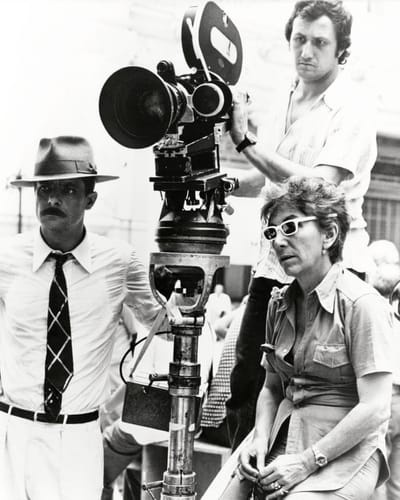
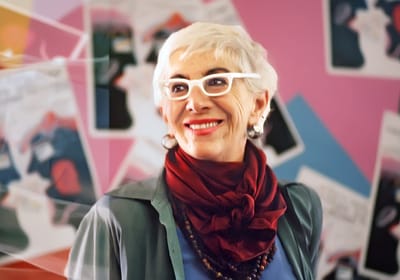
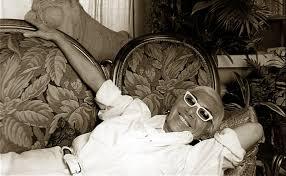
Fellini hired Wertmüller as an assistant director on “8½” in 1963, the same year in which she made her directorial feature debut with “The Basilisks,” which went on to win her her first award for best director at the Locarno Film Festival. The film followed the lives of impoverished people in southern Italy— a recurrent theme in her work.
In 1972, she made her Cannes debut with “The Seduction of Mimi,” a satirization of the male libido, which starred Giannini, who appeared in a number of her films. “The hypocrisy of the Italian male sexual code is cheerfully ridiculed,” Roger Ebert said of the movie. Wertmüller returned to Cannes the following year with “Love and Anarchy,” which also starred Giannini.
In 1975, she premiered her film “Swept Away,” in which Giannini played a sailor aboard the yacht of rich man and his beautiful, blond wife, played by Mariangela Melato, who looks down haughtily on the sailor, mocking him at every opportunity. Eventually, however, the sailor and the wife come to be alone on a deserted island, where it is he who has the power given his practical skills. While at first horrified, the wife soon finds the reversal in the power structure irresistibly attractive and the relationship becomes increasingly sadomasochistic.
The New York Times said “Swept Away” is “by far the lightest, most successful fusion of Miss Wertmuller’s two favorite themes, sex and politics, which are here so thoroughly and so successfully tangled that they become a single subject, like two people in love.” The film won a slew of awards including one for Best Director from the New York Film Critics Circle.
However a re-make by Guy Ritchie, starring his then-wife Madonna, made 27 years after the original, was panned by critics and flopped at the box office. Wertmüller’s first Academy Award nomination soon followed for “Seven Beauties,” her fifth film to open in the U.S. within two years. Giannini starred as a foolish man with seven ugly sisters who’s obsessed with notions of honor in the years of Italian fascism and the Nazi occupation of the country. He kills a pimp when one of these sisters begins to work for him and is sent to an asylum; finally he ends up in a Nazi concentration camp whose commandant, played by Shirley Stoler, is a hefty woman with a whip whom he seeks to seduce.
When he is successful the results are sadomasochistic at best and repulsive at worst; later he is forced to select other prisoners to be killed, which he does. The New York Times said “Seven Beauties” is “the finest, most ambitious work yet made by this gifted Italian director whose films appear to be inspired by irreconcilable contradictions” and “a handbook for survival, a farce, a drama of almost shattering impact. It’s a disorderly epic, seductively beautiful to look at, as often harrowing as it is boisterously funny, though it has a solid substructure of common sense and precisely observed details from life.”
In total, the film drew four Oscar nominations, including best foreign-language film, director — with Wertmüller becoming the first woman ever so nominated – screenplay (also Wertmüller), and actor for Giannini. Although Wertmüller lost the Best Director statuette to John G. Avildsen for “Rocky,” her nomination made history and paved the way for eventual female winners such as Kathryn Bigelow, who won in 2010 for “The Hurt Locker,” and Chloe Zhao, who won in 2021 for “Nomadland.” Wertmuller continued to direct films for decades after the high-profile successes of the 1970s, but none had the same impact. Her last feature film as a director was 2004’s “Too Much Romance… It’s Time for Stuffed Peppers.”
While praise is usually focused on these three films, the archive made a case for what it called “lesser known masterpieces” by Wertmüller such as “All Screwed Up” and “The Seduction of Mimi.” “Really, there are two strands — two souls — which co-exist in my work: the lighthearted one associated with musical comedies and the more socially conscious one. They are both deeply part of my nature,” is how she described her oeuvre in a 2019 interview with Variety. In 2019, she was awarded a star on the Hollywood Walk of Fame as well as receiving an honorary Academy Award for her achievements in motion pictures.
https://variety.com/2021/film/news/lina-wertmuller-female-oscar-director-nominee-dead-1235129757/
